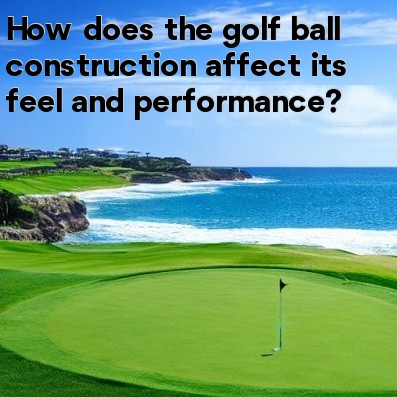
How Does Golf Ball Construction Affect Feel and Performance?
Golf ball construction plays a crucial role in determining the feel and performance of a golf ball. The materials used, the number of layers, and the dimple pattern all contribute to how the ball behaves when it is hit. Let's take a closer look at how these factors impact the feel and performance of a golf ball.
Materials:
- Golf balls are typically made from either Surlyn or Urethane.
- Surlyn is a durable and affordable material that provides a firm feel. It is often used in two-piece golf balls, which are popular among beginner and high-handicap golfers.
- Urethane, on the other hand, offers a softer feel and is commonly found in multi-layer golf balls. This material provides better spin control and allows for more shot-shaping capabilities.
Number of Layers:
- Two-piece golf balls have a solid rubber core and a cover made of Surlyn. These balls are designed for maximum distance and durability.
- Multi-layer golf balls typically have a soft inner core, one or more mantle layers, and a cover. The inner core provides the initial ball speed, the mantle layers add spin control, and the cover determines the feel and control off the clubface.
- The number of layers affects factors such as spin, feel, and distance. Generally, more layers provide better control and feel but can sacrifice distance.
Dimple Pattern:
- Golf balls have dimples on their surface, and the arrangement and depth of these dimples impact the ball's flight characteristics.
- The dimples create turbulence around the ball, reducing drag and allowing it to stay in the air longer. This results in increased distance.
- Different dimple patterns are designed to optimize the ball's performance in various conditions, such as high wind or wet grass.
Feel:
- The feel of a golf ball refers to the tactile feedback received when striking the ball.
- A softer feeling ball, typically one with a urethane cover, offers more feedback and can enhance touch around the greens.
- A firmer feeling ball, often with a Surlyn cover, may provide less feedback but can produce longer distances off the tee.
- Feel is subjective, and golfers often have personal preferences based on their playing style and skill level.
Performance:
- Golf ball construction heavily influences a ball's performance in terms of distance, spin, and control.
- A higher number of layers can increase spin and control, but too much spin can also be detrimental, causing shots to balloon or slice.
- Different constructions cater to different player types. Beginners may benefit from an affordable two-piece ball with reduced spin, while low handicap players might prefer a premium multi-layer ball with increased spin and control.
Golf ball construction is a critical factor in determining how a ball feels and performs on the golf course. The materials used, the number of layers, and the dimple pattern contribute to the overall characteristics of a golf ball. Understanding these factors can help golfers make informed decisions when selecting the right ball for their game.





